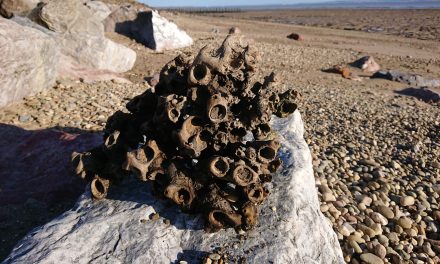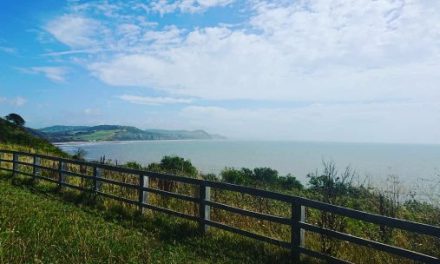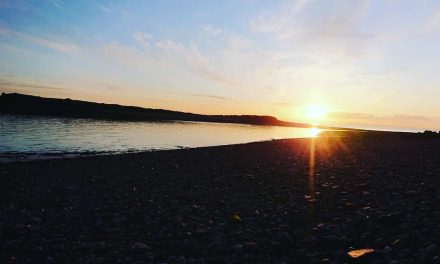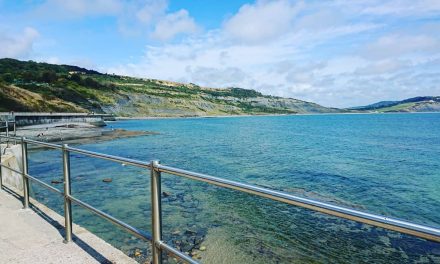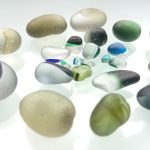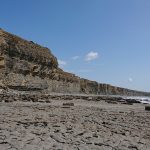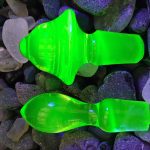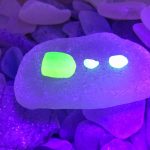People often ask, “Why does Seaham have sea glass?” The answer to this is simple: it is due to the old glasswork factories that were based in Seaham.
Seaham and nearby Sunderland housed some of the largest bottle factories in Great Britain. They were manufacturing hand-blown glass bottles, such as perfume bottles, vases, and the like; some were brightly coloured and patterned, resulting in the sea glass that you find washed up on the beaches of Seaham today.
Way back before we had a refuse collection service, rubbish was often disposed of onto our beautiful beaches; glass from the bottle works was no different. It was discarded directly onto the beach and into the sea.
Unlike modern-day plastic, which creates pollution and kills wildlife, fish, etc. The majority of Victorian rubbish was made of glass, and unlike plastic, the glass evolved to become part of the beach. The glass is constantly moving, being tumbled around in the rough seas, forming it into smooth, pebble-shaped beauties. Some of this glass has been rolling around in the sea since they first opened the bottle factories in 1850.
People travel far and wide to visit Seaham just for the sea glass, even travelling all the way from America. Seaham sea glass is the most spectacular sea glass that you will ever find. Lots of people use Seaham sea glass for making jewellery because it is absolutely perfect! You can tell just by looking at it that it is Seaham sea glass because it is so perfectly shaped.
What to expect from our article
What is sea glass?
Sea glass is just that—glass that has been discarded into the sea. Over many, many years, the glass has been smoothed and shaped, creating these wonderful round or oval nuggets of beautiful coloured glass. The longer the glass is in the sea, the better the quality because it smooths out over time.
Many people think that the glass dumped in the sea was from items that got broken, but many pieces of glass were from spills and even waste glass; this is where the huge pieces of sea glass that can be found on the beach come from. There was also a lot of sea glass formed from misshapen or faulty pieces of glass that were discarded onto the beach.
What can you find at Seaham?
You can find many types of sea glass at Seaham, from plain clear, green, and brown to more unusual colours like red, blue, pink, and orange. You can find small pieces and huge pieces; you can also find bottle stoppers, pottery, milk glass, marbles, and amberina glass.
The sea glass that everyone is dying to find at Seaham is multis. Multis are beautiful coloured glass with patterns created by combining many different types of scrap glass.
Multis are sometimes referred to as “end-of-day glass” by some people. End-of-day glass resulted from lots of different scraps of glass being melted together “at the end of the day,” and this glass was discarded with all the other waste glass.
Multis are sometimes purposefully created by layering many different coloured glass onto clear glass; this process is known as fused glass and takes a great deal of skill to master. Practice is required to learn how to do it correctly, which would have created a lot of waste glass.
One of the other things you can find at Seaham is slag glass, or malachite glass, as it is also known. Slag glass in its original form would have been a swirly marble-type milk glass used to make all kinds of things like vases and bowls.
Where is the best place to sea glass hunt?
When we went, we went to Seaham Hall Beach; it’s the beach with Tonia’s Café in the car park. We parked there and walked down the steps onto the beach. It’s free to park, which is always great when you are out beachcombing for the day. Car parking fees can quickly add up, making beachcombing an expensive hobby. On the same stretch of coast, you can also visit Blast Beach and Chemical Beach. We didn’t go to these beaches, as we were only staying for two days.
How do I find seaglass?
You can find Seaham sea glass just by looking at the ground; it’s usually just sitting there on the surface waiting to be discovered.
The first day we went to Seaham, we just walked down the beach directly to the water and started walking across the beach. There were lots of people on the beach that day, and I think we didn’t find as much because people were walking in front of us, picking it up before we even got to it.
We walked to the end of the beach and then slowly back down the next day, but we discovered that walking across the beach and then back to the sea in a zig-zag pattern was the most productive way of searching for sea glass. We also searched the shingle patches. We used a long handheld garden rake to scrape the shingle, which revealed the sea glass that was hidden there.
What do I need to go sea glass hunting?
Tide table or an app
You need an accurate way of telling what the tide is going to be; there is absolutely no point in going if the tide is in or coming in because you either won’t be able to get on the beach or you will be rushed off it because the tide comes in so fast. I recommend using a mobile phone app called AnyTide. I use this app all the time, and it’s never failed me yet at predicting the tide times.
I always go 2 hours after a high tide, leaving plenty of time for me to get on the beach and more time to explore up until the tide reaches the lowest point. Misjudging the tide can also be extremely dangerous, especially if there is only one access point to the beach and you have ventured off a ways from that access point.
Always check where the tide is during your visit because it is easy to get carried away collecting and not realise the tide is coming in, and trust me, it comes in quicker than it goes out, leaving you cut off.
Hand rake
As mentioned above, we took along a hand rake, which came in handy for scraping at the shingle and also for grabbing pieces of sea glass before the sea took them away with the next sneaky high wave. The one we have is telescopic, which saves a lot of bending down, unless you find some cracked sea glass, of course.
Wellies
I also recommend wearing a pair of wellies, and it’s one of the things I will be getting as I don’t actually own a pair. At times, the tide in Seaham can be quite deceiving, tempting you to walk out a little further, only to catch you off guard with a wave that comes rushing in really fast! There’s nothing worse than having wet feet, especially if you are going to stay for a few hours. It can be absolutely miserable if you are wet and cold.
Finds pouch/bag
a pouch or a bag for your finds. I used a pouch I made myself that goes around my waist. It has plenty of pockets to store sea glass and also for carrying essentials like wet wipes or hand sanitizer, and don’t forget plenty of tissues!
History of glassworks at Seaham
In 1852, the marquis of Londonderry leased a piece of land to John Candlish and Robert Greenwell, upon which the Seaham bottle works would be built. The factory opened in 1853, manufacturing black glass bottles (known to us sea glass collectors as pirate glass). In 1854, Candlish bought a nearby pottery and bottle works at auction. It later became part of the Seaham Bottle Works.
John Candlish would go on to buy out Robert Greenwell, and it was renamed the Londonderry Bottle Works. The site initially housed just two bottle works, a manager’s house, and housing for the workers. It would eventually turn into a major industrial strip that would define Seaham.
By 1894, the site would become home to a total of six-bottle houses, chemical works, iron works, and the Londonderry Railway, making it an almost self-sufficient community with housing, churches, and schools being built in the surrounding area. John and Robert would work to improve the workers’ community by adding banks and even a library.
The relationship between themselves and the workers was reported to be so great that the workers agreed to work a month without wages when John ran into financial difficulty. This allowed him to recover financially, keeping the company afloat. After both men died, the workers of the Londonderry bottle works built the Candlish memorial hall in memory of them both. I think this sums up the relationship that was forged between them and the workers.
Ownership of the six Seaham bottleworks and one in Sunderland transferred to John’s son Joseph. Then, Joseph teamed up with a wine and spirits company. Together, they took glass products from Sunderland docks to London and brought back other things, like sand, in their place.
The bottle works would eventually employ 500 people and produce 20,000,000 bottles per year. The Seaham bottle works were eventually closed after moving to London in 1921, and the site today is nothing more than a storage area.
It is only a matter of time before Seaham beaches stop producing any sea glass at all. With the bottle works and old refuse practises long gone, the sea glass at Seaham will eventually dry up.
I spoke to some locals when I visited, and they say the sea glass that is there now is nothing compared to what it was when they were children. In another 50 years, Seaham sea glass will become just another piece of history, along with the bottle works.


